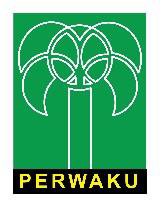The role of the parties in mangrove ecosystem recovery in Juntinyuat Coast, West Java, Indonesia
Abstract
Keywords
References
Ahmadi, R. (2016). Metodologi Penelitian Kualitatif. Yogyakarta: ArRuzzmedia.
[Dishut Jabar] Dinas Kehutanan Provinsi Jawa Barat. (2018a). Hutan Mangrove sebagai Pelindung Abrasi. ww.dishut.jabarprov.go.id [Indonesia].
[Dishut Jabar] Dinas Kehutanan Provinsi Jawa Barat. (2018b). Statistik Kehutanan Jawa Barat. Dinas Kehutanan Provinsi Jawa Barat. Bandung [Indonesia].
[KLHK] Kementerian Lingkungan Hidup dan Kehutanan. (2017). Miliki 23% Ekosistem Mangrove Dunia, Indonesia Tuan Rumah Konferensi Internasional Mangrove 2017. Ditjen Bina Pengelolaan Kawasan Ekosistem Esensial. Jakarta: KLHK.
Kusmana, C., & Sukristijiono. (2016). Mangrove resource uses by local community in Indonesia. Jurnal Pengelolaan Sumberdaya Alam, 6(2): 217-224.
Kusmana, C., Istomo, & Purwanegara, T. (2010). Manual Teknik Budidaya Mangrove. Bogor: Departemen Silvikultur Fakulutas Kehutanan Institut.
Kustanti, A. (2011). Manajemen Hutan Mangrove. Bogor: IPB Press.
Kustanti, A., Nugroho, B., Darusman, D., Kusmana, C., & Nurrochmat, D.R. (2014). Evolusi hak kepemilikan dalam pengelolaan ekosistem hutan mangrove di Lampung Mangrove Center. Risalah Kebijakan Pertanian dan Lingkungan, 1(3): 143-158.
Miles, M.B., & Huberman, M.A. (2012). Analisis Data Kualitatif: Buku Sumber Tentang Metode-Metode Baru. Depok: UI Press.
Oni., Kusmana, C., & Basuni, S. (2019). Success story of rehabilitation mangrove ecosystem in Karangsong Beach Indramayu Regency. Journal of Natural Resources and Environmental Management, 9(3): 787-796.
Prastowo, A. (2016). Metode Penelitian Kualitatif dalam Persepektif Rancangan Penelitian. Cetakan ke-3. Yogyakarta: Ar-Ruzz Media.
Rochmayanto, Y. (2021). Government, the private sector, and local communities in ecosystem restoration governance and practices. Indonesian Journal of Applied Environmental Studies, 2 (2):65-71.
Sugiyono. (2016). Metode Penelitian Kuantitatif, Kualitatif dan R & D. Bandung: Alfabeta.
Supriharyono, M.S. (2009). Konservasi Ekosistem Sumberdaya Hayati di Wilayah Pesisir dan Laut Tropis. Yogyakarta: Pustaka Pelajar.
Wibowo, A., Priatna, D., & Rochmayanto, R. (2021). Teknik Restorasi Ekosistem Hutan Mangrove. In: D. Priatna, Y. Rochmayanto, K.L. Ginoga, M.Z. Muttaqin (Eds). Strategi dan Teknik restorasi Ekosistem Hutan Mangrove. Bogor: IPB Press. Pp. 95-131.
DOI: 10.33751/injast.v3i2.5120
 Abstract views : 357
Abstract views : 357
Refbacks
- There are currently no refbacks.
Copyright (c) 2022 Indonesian Journal of Applied Environmental Studies

This work is licensed under a Creative Commons Attribution-NonCommercial-ShareAlike 4.0 International License.













